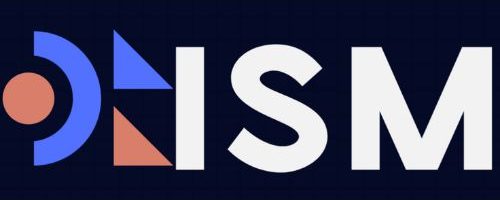What is Procurement?
Procurement is the complete process for acquiring goods and services by organizations. It involves defining needs, selecting suppliers, making contracts, purchasing, receiving, and paying for goods. This process is vital for both strategy and execution in procurement.
The procurement meaning goes beyond a single purchase. It includes policies, market analysis, and risk management to ensure cost, quality, delivery, and compliance. In business, procurement aligns sourcing with budget and operational needs. This ensures timely delivery of inputs, at agreed terms, and with verified quality.
Many enterprises and public agencies have formal procurement departments. These are led by chief procurement officers who work with finance, legal, and operations. They manage contracts, coordinate accounts payable, and oversee competitive bids. Research by IBM from Bain & Company shows effective procurement can cut purchasing costs by 8–12%. It also delivers 2–3% annual savings, highlighting the value of procurement.
Public procurement follows strict rules, ensuring fairness and transparency. It adheres to standards set by institutions like the U.S. Office of Management and Budget. Across all sectors, procurement is key to managing supply chains. It ensures continuity, capacity, and compliance with policies.
Procurement Definition and Meaning in Business
In the realm of business, procurement leaders are tasked with managing spend to acquire goods and services efficiently. They aim for the right quality, timing, and total cost. This practice is vital for cash flow management, risk control, and operational continuity across various sectors, from manufacturing to healthcare. It encompasses policy, analytics, and supplier performance, aiming to create significant procurement value beyond mere unit prices.
Procurement definition vs. procurement meaning
The procurement definition outlines the entire process, from setting specifications to final payment. It involves sourcing, issuing requests, negotiating contracts, and ensuring compliant transactions. This structured approach guarantees traceable and compliant records.
The broader meaning of procurement in business extends to governance, policy adherence, and developing supplier relationships. It focuses on achieving long-term value through risk management, quality assurance, and performance clauses. These elements protect the supply chain and stabilize costs over time.
How procurement supports profitability and budgeting
Effective procurement helps reduce costs while maintaining service levels. Organizations using analytics and category strategies have seen 8–12% cost reductions and 2–3% yearly savings. Savings come from better demand management, clear specifications, and total cost evaluation.
Budgeting is essential for spend control, with managers having set authority. In the private sector, lower input costs increase margins and free up cash for growth. In public agencies, competitive practices and adherence to ceilings ensure fiscal integrity and audit readiness, reinforcing procurement value.
Procurement as part of supply chain management
Procurement is a specialized part of supply chain management, focusing on sourcing and contracting. SCM, on the other hand, encompasses planning, logistics, warehousing, transformation, and distribution. The procurement process aligns with finance, legal, accounts payable, and end users to meet needs, terms, and service levels.
By choosing reliable suppliers, procurement ensures continuity at the best total cost. It integrates market data, risk signals, and operational needs to support resilient delivery across the entire network.
What is Procurement?
In simple terms, procurement is a strategic business function. It ensures the acquisition of goods and services at the right time, quality, and cost. This function involves planning, sourcing, contracting, and more, with a focus on data management and audit trails.
The procurement journey starts with identifying needs and setting specifications. Teams then conduct market research and issue requests for information or proposals. They evaluate bids, negotiate contracts, and issue purchase orders. After that, they verify deliveries, match orders with receipts and invoices, approve payments, and record results.
A solid procurement strategy aligns spending with business goals and risk tolerance. It sets category plans, defines make-or-buy decisions, and establishes supplier performance metrics. The cycle is ongoing, with results used to improve quality, cost, and delivery over time.
Procurement caters to different needs. Direct categories support production and revenue, while indirect categories cover operations like IT and marketing. Goods procurement focuses on materials and equipment, and services procurement covers labor and professional work.
Organizations scale their procurement function based on size and complexity. Small firms might have one specialist, while large enterprises have a dedicated department. In both cases, policy compliance, segregation of duties, and data accuracy are key.
| Stage | Primary Actions | Key Controls | Outcomes |
|---|---|---|---|
| Needs Identification | Define scope, specifications, budgets | Stakeholder sign‑off, demand validation | Clear requirements and funding alignment |
| Sourcing | Market scan, RFI/RFP/RFQ, bid evaluation | Competitive process, conflict disclosures | Qualified supplier shortlist and bids |
| Negotiation & Contracting | Terms, SLAs, pricing, risk clauses | Legal review, approval matrix | Signed contract and governance plan |
| Ordering | Issue purchase orders, confirm lead times | PO policy thresholds, coding accuracy | Authorized commitments and delivery dates |
| Receiving & Verification | Inspect goods/services, record receipts | Quality checks, discrepancy reporting | Accepted deliveries and performance data |
| Three‑Way Match | Match PO, receipt, and invoice | Tolerance limits, exception workflow | Validated invoices for payment |
| Payment & Records | Approve, remit, and archive | Segregation of duties, audit logs | On‑time payment and complete audit trail |
In practice, procurement also involves monitoring supplier performance, assessing risks, and seeking continuous improvement. These activities enhance the procurement process and inform future strategies, regardless of the procurement types involved.
Procurement vs. Purchasing
In practice, procurement vs purchasing reflects two distinct mandates. Procurement involves strategy, policy, and supplier governance. Purchasing, on the other hand, executes orders to meet approved needs. Mature procurement management links sourcing choices to budgets and risk controls, producing measurable procurement value across the enterprise.
Strategic process versus transactional activity
Procurement operates as a strategic process. It spans needs identification, market research, RFI/RFP/RFQ, negotiation, and contract stewardship. It also oversees supplier performance and lifecycle risk.
Purchasing is transactional. It focuses on requisitions, purchase orders, expediting, receiving, and payment. The goal is to ensure approved items arrive on time and in full.
Focus on long-term value versus lowest price
Procurement targets total cost of ownership, quality, delivery reliability, and risk mitigation. It cultivates supplier relationships that support innovation and continuity. This builds enterprise-wide procurement value.
Purchasing focuses on unit price, lead time, and immediate fulfillment. The priority is the best available price within contract terms and swift cycle times.
Roles, skills, and success metrics for each
Procurement roles require negotiation, market analysis, contract governance, and risk management. Leaders such as chief procurement officers align procurement management with finance and accounts payable. They participate in competitive award decisions.
Purchasing roles emphasize accuracy, organization, and system proficiency. Key results include order precision, on-time receipt, and attainment of agreed pricing.
| Dimension | Procurement | Purchasing |
|---|---|---|
| Scope | Strategy, sourcing, contracting, supplier performance | Ordering, expediting, receipt, invoicing, payment |
| Primary Objective | Long-term procurement value and risk-adjusted outcomes | Accurate, timely, and cost-effective transactions |
| Decision Horizon | Multi-year, lifecycle-based | Immediate need and short-term delivery |
| Key Skills | Negotiation, market research, contract law, supplier risk | Data entry accuracy, attention to detail, ERP proficiency |
| Core Metrics | Cost savings, TCO, compliance, supplier performance | Order accuracy, on-time receipt, unit price attainment |
| Governance Role | Policy design and oversight within procurement management | Policy execution within approved workflows |
| Stakeholder Integration | Finance, operations, legal, and executive leadership | End users, warehousing, accounts payable |
The Procurement Process: From Need Identification to Payment
The procurement process integrates demand, budget, and risk controls into a unified flow. It ensures that sourcing steps are aligned with procure-to-pay systems and eProcurement tools. This standardization facilitates approvals, pricing, and data capture across various business units.
Identifying needs and setting specifications
Stakeholders outline the scope, performance standards, and technical specifications. Forecasts are used to translate production or project plans into time-phased demand and cost targets. Clear specifications help reduce change orders and ensure finance can validate budgets before making commitments.
Supplier research, RFI, RFP, and RFQ
Market scans identify qualified vendors with proven capacity and compliance. RFI RFP RFQ sequences collect capability data, structured proposals, and firm pricing. eProcurement platforms track these responses, ensuring audit-ready documentation.
Evaluation, selection, and contract negotiation
Bids are evaluated based on total cost, quality, delivery reliability, technical fit, and regulatory adherence. Competitive bidding may involve multiple suppliers. Award decisions consider value and risk, not just the lowest price. Negotiation determines pricing, payment terms, delivery schedules, SLAs, and liability allocation.
Purchase orders, receiving, and three-way match
Approved awards are converted into purchase orders with detailed information. Operations receive and inspect goods or services against specifications. Three-way matching reconciles PO, receipt, and invoice to verify quantities, unit costs, taxes, and agreed terms.
Invoice approval, payment processing, and recordkeeping
Invoices are routed for approval based on contract controls and delegation of authority. Procure-to-pay workflows issue payments on net terms, capturing discounts and avoiding duplicates. Accurate records for contracts, POs, invoices, and communications support audits, compliance reviews, and performance analytics.
Types of Procurement
Organizations categorize their buying activities to enhance control, reduce costs, and expedite processes. These categories are critical as they define the nature of what is being sourced and its importance to both operations and finance. By establishing clear categories, teams can develop policies, monitor savings, and mitigate risks more effectively.
Direct and indirect procurement
Direct procurement involves acquiring inputs that directly contribute to the final product or service offered to customers. This encompasses raw materials, assemblies, and production tooling. The impact on unit cost, lead time, and profit margins is significant.
On the other hand, indirect procurement deals with the goods and services essential for the business’s operation. This includes items like laptops, forklifts, and facilities supplies, as well as marketing and advertising services. It plays a key role in determining productivity, safety, and overhead costs.
Goods procurement and services procurement
Goods procurement focuses on tangible items within both direct and indirect categories. It encompasses a wide range, from steel coil and semiconductors to printers and HVAC parts. Success is measured by quality, specifications, and logistics.
Services procurement, in contrast, encompasses direct labor for production and indirect services that support operations. It includes contract engineering, on-site security, recruitment, maintenance, and cleaning. Achieving success in this area requires clear scopes of work and measurable outcomes.
Examples across industries and operations
- Manufacturing: direct procurement of aluminum billet, electronic components, and CNC tooling; services procurement for calibration, welding, and line maintenance.
- Office and facilities: goods procurement of monitors, routers, and safety gear; indirect procurement of janitorial contracts and building repairs.
- Service industries: services procurement for contract workers, call center support, and travel services; goods procurement for uniforms and peripherals.
- Public sector: goods procurement for fleet vehicles and medical supplies; indirect procurement under open competition for IT services, training, and security.
Procurement Strategy and Value Creation
A disciplined procurement strategy transforms supplier markets into quantifiable value. At companies like Toyota, Apple, and Procter & Gamble, leading teams align category plans with budgets, risk limits, and service levels. This approach enhances resilience and boosts cost efficiency.
Total cost of ownership and value beyond price
Effective sourcing looks beyond unit price to total cost of ownership. It considers acquisition, logistics, operating, and maintenance costs, quality yield, lifecycle, and switching costs.
Value creation extends beyond price. It includes standardization, demand management, and contract optimization. Companies achieve 8–12% cost base reductions and an additional 2–3% in annual savings through structured sourcing and analytics, as shown by Bain research referenced by IBM.
Risk reduction, quality, and delivery performance
Supplier due diligence, diversification, and clear service-level agreements mitigate supply disruption risks. Performance scorecards monitor on-time delivery, defect rates, and corrective actions.
Advanced teams employ dual sourcing and inventory buffers for critical parts. Continuous monitoring, backed by audits and quality gates, enhances supplier capability while protecting margins.
Competitive bidding and when lowest bid isn’t best
Formal RFP and RFQ events facilitate competitive bidding among qualified suppliers. Evaluation models consider cost, capability, capacity, and delivery performance alongside risk factors.
The lowest bid is not always accepted. It’s rejected if it fails quality thresholds, lacks volume flexibility, or doesn’t meet compliance. This ensures total cost of ownership advantages and supply continuity.
- Key levers: specification clarity, market mapping, should-cost analysis, and contract incentives.
- Outcomes: stable lead times, higher first-pass yield, and sustained procurement value across the product lifecycle.
Procurement Management and Governance
Effective procurement management brings structure, accountability, and measurable control to an enterprise. It ensures that buying activities align with budget, risk tolerance, and audit standards. This approach maintains policy compliance in every transaction.
Source-to-settle oversight and policy compliance
End-to-end oversight covers the entire source-to-settle lifecycle. It includes category planning, market analysis, RFX events, contract execution, receiving, three-way match, and payment approval.
Procurement management sets up clear gates, segregation of duties, and documented controls. This framework supports policy compliance, reduces maverick spend, and enhances audit readiness. It ensures traceable approvals and standardized data.
- Integrated workflows unify sourcing, contracting, and accounts payable to prevent leakage.
- Risk registers track supplier, legal, and operational exposures from bid to settlement.
- Metrics such as cycle time, contract coverage, and compliance rate verify control quality.
Roles of procurement managers and CPOs
Procurement managers implement standards in daily sourcing cycles. They work with finance for accruals, legal for clause integrity, and IT for system governance. This protects master data.
Chief Procurement Officers set enterprise policy and steer category strategy. They partner with accounts payable for payment terms optimization, oversee competitive award decisions, and embed source-to-settle discipline into strategic planning and cash flow management.
- Managers: execute RFPs, negotiate terms, and monitor supplier performance against SLAs.
- CPOs: define governance models, approve risk thresholds, and align spend with corporate objectives.
Ethical standards, fairness, and competition
Procurement governance relies on transparent rules, open competition, and equal treatment of qualified bidders. Specifications reflect genuine needs, not favored features, and evaluation criteria are published in advance.
Public and private sectors apply conflict-of-interest controls, non-collusion certifications, and traceable award rationales. These measures sustain fair market access and protect value for money across source-to-settle activity.
- Clear timelines, accessible documentation, and objective scoring sustain fairness.
- Bid protests follow defined procedures that preserve integrity and policy compliance.
Supplier Relationship Management
Supplier relationship management (SRM) ensures quality, timely delivery, and adherence to contracts. It’s a key part of procurement management, using scorecards and regular reviews to monitor performance. This approach safeguards the value of procurement across various categories and regions.

Effective teams employ statistical sampling and root-cause analysis. They also focus on collaborative improvement to enhance savings and reduce defects. SRM establishes clear escalation paths to swiftly resolve issues and document lessons learned.
Platforms like SAP, Oracle, Coupa, and Jaggaer offer tools for real-time monitoring. These tools track disruptions and service levels, enabling renegotiations when necessary. This ensures reliable supply at agreed-upon prices and specifications.
Structured governance is essential for managing price reviews and risk-sharing models. Input from quality, logistics, and finance ensures SRM aligns with procurement goals. This strategy converts performance data into tangible procurement value, improving lead times and brand reliability.
- Scorecards: Defect rate, OTIF, capacity utilization, and contract compliance.
- Feedback cadence: Monthly metrics review and quarterly improvement plans.
- Analytics: Cost variance, PPV trends, and forecast accuracy for demand alignment.
- Risk controls: Dual sourcing, business continuity testing, and supplier financial health checks.
- Innovation: Joint design reviews and value engineering to reduce total landed cost.
Technology in Modern Procurement
Today’s purchasing teams leverage digital tools to manage costs, speed up processes, and lower risks. These platforms integrate sourcing, ordering, and payment seamlessly. They also ensure that all transactions are documented for audit purposes.
Leaders are now standardizing their processes with eProcurement. They integrate procure-to-pay to streamline policy, compliance, and cash management. Procurement analytics helps make informed decisions by quantifying savings, performance, and risk.
eSourcing, eProcurement, and procure-to-pay (P2P)
eSourcing platforms simplify finding suppliers, managing bids, and negotiations. eProcurement systems automate the requisition, catalog, and approval process. This ensures that only preferred suppliers and prices are used. Procure-to-pay connects purchasing with accounts payable, streamlining the entire process.
Organizations use APIs to synchronize master data, budgets, and confirmations. This integration reduces maverick spending and improves payment timeliness.
AI, analytics, and RPA for automation and insights
AI models predict demand, identify supplier risks, and suggest savings opportunities. Procurement analytics tracks cost avoidance, lead times, and service levels. Dashboards and alerts provide real-time insights.
RPA automates tasks like data entry, PO creation, and invoice processing. This increases accuracy and frees up staff for strategic planning. Machine learning enhances RPA by handling exceptions and reducing cycle variance.
Contract management, blockchain, and cybersecurity
Contract management software standardizes clauses, versions, and obligations. This reduces legal risks and prevents missed renewals. Alerts and playbooks facilitate quicker reviews with consistent terms.
Blockchain adds a tamper-evident record for contracts, shipments, and payments. This improves provenance and dispute resolution. Strong cybersecurity protects sensitive data with encryption, role-based access, and threat detection.
Mobile apps and electronic document management
Mobile tools enable approvals, goods receipt, and order tracking on the go. This keeps the procure-to-pay process moving without interruptions. Push notifications help managers stay within service level agreements.
Electronic document management digitizes contracts, POs, invoices, and audit trails. This leads to faster retrieval, better compliance checks, and lower storage costs.
| Capability | Primary Function | Operational Gain | Risk Control | Key Metric Improved |
|---|---|---|---|---|
| eSourcing | Supplier discovery, bidding, negotiation | Shorter cycle times | Transparent award logic | RFx duration; bid coverage |
| eProcurement | Catalogs, requisitions, approvals | Higher compliance to preferred suppliers | Policy enforcement | Maverick spend rate |
| Procure-to-pay | POs, receiving, invoicing, payment | End-to-end visibility | Three-way match controls | Invoice cycle time; on-time payment |
| Procurement analytics | Performance dashboards and savings tracking | Data-driven decisions | Anomaly and variance alerts | Savings realized; KPI attainment |
| RPA | Automated data entry and validation | Lower manual effort | Error reduction | Touchless invoice rate |
| Contract management | Clause control and obligation tracking | Faster cycles | Reduced legal exposure | Cycle time; renewal adherence |
| Blockchain in procurement | Tamper-evident records and provenance | Trusted data sharing | Fraud deterrence | Dispute rate; traceability depth |
| Mobile and e-docs | Remote approvals and digital records | Continuous workflow | Audit-ready trails | Approval latency; retrieval time |
Procurement in Business Operations
Effective procurement in business links sourcing choices to financial targets and operational control. It aligns contracts, cash flow, and service levels with enterprise goals. It also maintains audit-ready records across the procure-to-pay cycle.
Cross-functional collaboration with finance and legal
Procurement partners with finance to match demand plans with cash forecasts and capital allocation. Teams coordinate on approvals, spend thresholds, and accruals to protect margins and liquidity.
Legal counsel reviews clauses on liability, data privacy, and IP. Enforceable terms, standardized by playbooks from firms like Deloitte and Baker McKenzie, reduce dispute risk. They support compliance with UCC and state statutes.
Budgeting impact and performance analytics
Budgets set the spend envelope; purchase orders manage commitments against those limits. Variances are tracked in monthly closes and tied to cost centers for accurate rollups.
Performance analytics quantify realized savings, cost avoidance, and supplier on-time delivery. Metrics feed rolling forecasts in ERP suites such as SAP and Oracle. This improves price benchmarks and category strategies.
Continuous improvement and QA checks
Continuous improvement uses periodic QA reviews, scorecards, and corrective actions. Results trigger renegotiations or competitive bids when quality or service misses targets.
Teams deploy automation and AI to streamline intake, approvals, and three-way match. Standardized data models enable end-to-end visibility across procurement in business, finance, accounting, and logistics.
| Operational Area | Primary Objective | Key Metrics | Tools and Platforms | Value to the Business |
|---|---|---|---|---|
| Finance Collaboration | Align spend with budgeting and cash flow | Budget adherence, working capital days | SAP S/4HANA, Oracle Cloud ERP | Predictable costs and stronger liquidity |
| Legal Collaboration | Contract enforceability and compliance | Dispute rate, cycle time to execute | DocuSign CLM, Ironclad | Lower risk and faster agreements |
| Performance Analytics | Measure supplier and cost outcomes | Savings realized, OTIF, PPV | Coupa, Tableau, Power BI | Data-driven sourcing decisions |
| Continuous Improvement | Raise quality and reduce waste | Defect rate, lead time, rework | Lean, Six Sigma, Celonis | Stable supply and lower total cost |
Procurement Examples and Use Cases
These procurement examples illustrate how different sectors influence buying decisions, contract terms, and performance controls. We see direct procurement for production inputs, indirect procurement for operations, and public procurement for government needs. Each case offers a unique perspective on how procurement is managed.
Manufacturing: raw materials and direct services
Automakers like Ford secure steel, aluminum, resins, and electronics through direct procurement. These contracts are tied to production forecasts. They include technical specifications, delivery windows, and pricing tied to indexes like CRU or LME.
Pharmaceutical plants also engage in direct procurement for APIs, excipients, and sterile packaging. They also purchase direct services like validation, calibration, and GMP cleaning. Service-level agreements are in place to ensure uptime, scrap limits, and on-time delivery.
Office operations: equipment, supplies, and facilities
Enterprises handle indirect procurement for laptops from Dell or HP, MRO supplies from Grainger, and furniture from Steelcase. They also manage janitorial services and corporate travel with negotiated rates. eProcurement catalogs and P2P workflows streamline requisitions and approvals.
Marketing teams buy print runs, event services, and software subscriptions. HR acquires recruiting services from LinkedIn and background checks from Checkr. Budget controls, three-way match, and spend analytics ensure compliant, cost-effective purchases.
Public sector: public procurement and open competition
Federal and state agencies conduct public procurement with open, fair, and impartial processes. They use competitive RFP and RFQ events to invite multiple qualified vendors. Clear rules and non-restrictive specifications encourage participation.
Evaluation models consider quality, delivery, and supplier capability alongside price. For example, transportation departments may award bridge materials or ITS equipment based on more than just the lowest bid. This ensures a balance between risk and lifecycle value.
- Category scope: direct procurement for production inputs; indirect procurement for operations; public procurement for government programs.
- Controls: technical standards, SLAs, budget enforcement, and source selection criteria.
- Outcomes: reliable supply, auditable compliance, and measurable total cost over contract life.
Conclusion
Procurement is a discipline that connects cost control, risk mitigation, and steady operations. It involves a detailed process from need specification to timely payment with clean records. Unlike purchasing, procurement focuses on total cost of ownership and supplier performance for lasting value.
Technology enhances speed and transparency in eSourcing, eProcurement, and procure-to-pay. Tools like AI and machine learning improve data quality and decision-making. Research from Investopedia and IBM outlines the procurement lifecycle. Bain-cited benchmarks highlight sustained savings with analytics-driven procurement management.
Organizations that embrace fair competition and policy compliance achieve tighter budgets and fewer supply shocks. With clear roles and documented processes, procurement management boosts cash flow and supplier reliability. This leads to higher procurement value through better pricing, quality, delivery, and risk control.
For finance, supply chain, and operations leaders, the task is clear: formalize procurement strategy, standardize processes, and scale with data. This approach turns sourcing into a repeatable engine for profitability and resilience in the U.S. market.
FAQ
What is procurement in business?
Procurement is the entire process of getting goods and services for a company. It starts with identifying needs and ends with payment. It’s more than just buying; it’s strategic and aims to improve profitability by managing costs, quality, and risks.
What is the difference between procurement definition and procurement meaning?
The definition of procurement includes everything from setting specifications to paying for goods and services. It’s about governance, following policies, and managing risks. The meaning goes beyond just buying, focusing on long-term value and strategic partnerships.
How does procurement support profitability and budgeting?
In private companies, procurement helps keep costs low and profits high. IBM’s research shows significant savings through smart procurement practices. For governments, it ensures spending stays within limits and promotes fairness and transparency.
How is procurement different from purchasing?
Procurement is strategic and focuses on the entire lifecycle of goods and services. It involves needs analysis and managing suppliers. Purchasing, on the other hand, is about making quick transactions. Procurement aims for long-term value, while purchasing focuses on immediate needs.
What are the main types of procurement?
Procurement can be direct or indirect. Direct procurement gets raw materials and components for production. Indirect procurement buys things like IT and marketing services. Goods procurement deals with physical items, while services procurement involves labor and expertise.
What are the key steps in the procurement process?
The process starts with identifying needs and researching suppliers. It includes competitive bidding, contract negotiation, and issuing purchase orders. The steps also involve receiving goods, inspecting them, and paying for them. Keeping records is also important for audits and analysis.
Where does procurement fit within supply chain management?
Procurement is a key part of supply chain management, focusing on sourcing and contracting. It works closely with finance, legal, and operations to ensure everything runs smoothly. Logistics and distribution handle the physical movement of goods.
What is a procurement strategy and how does it create value?
A procurement strategy outlines how to source and manage suppliers. It aims to optimize costs, quality, and delivery. By focusing on strategic partnerships and smart contract management, it delivers significant savings and resilience.
Who manages procurement and what is the role of a CPO?
Procurement managers oversee the sourcing process and ensure standards are followed. They work closely with finance and legal. A Chief Procurement Officer (CPO) sets policy and oversees the entire procurement process, focusing on strategic decisions and performance metrics.
What is supplier relationship management (SRM)?
SRM evaluates and improves supplier performance on quality, delivery, and more. It uses scorecards and reviews to reduce risks and enhance value. Strong SRM leads to better partnerships, innovation, and continuity.
Which technologies power modern procurement?
eSourcing platforms and eProcurement systems streamline the process. AI and analytics help find savings and manage risks. RPA speeds up tasks like invoice processing. Contract management systems and blockchain enhance transparency and security.
How does procurement influence budgeting and performance?
Procurement controls spending and tracks commitments and actuals. It quantifies savings and informs budgeting and forecasting. This improves financial planning and control.
Can you provide procurement examples across industries?
In manufacturing, procurement buys raw materials and components. In office operations, it includes IT and supplies. Public procurement follows strict rules and focuses on quality and capacity, not just price.







